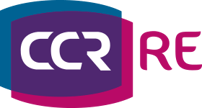Reinsurance tutorials #26
What is group life ?
Group life insurance is a type of life insurance in which a single contract covers an entire group of people. Usually, the policy-owner is an employer or an entity such as a labor group or a non-profit, and the policy covers the employees or members of the group.
Group Life is often provided as part of an employee benefit package. In most cases, the cost of group coverage is far less than what the employees or members would pay for a similar amount of individual protection.
As the policy-owner, the employer or other entity keeps the actual insurance policy, known as the master contract. When group term insurance is provided through an employer, the employer usually pays for most (if not all) of the premiums. The amount of coverage is typically between one to ten times the annual salary, depending on the seniority of the employee.
Group term coverage remains in force until employment is terminated or until the specific term of coverage ends. It is either compulsory (which is better for an insurer as it guarantees a wider coverage which ensures a spread of the risk) or non-compulsory (where the employee chooses whether to be covered or not).
The cover provided to a particular employer or entity is called a scheme.
The scheme can offer a range of benefits covered such death (all causes), double indemnity in case of accident, temporary and permanent disability, total or partial, critical illness, medical expenses.
Benefits and amounts covered can differ depending on the category of the employee in a given company.
Rates are based on group-level factors such as the group’s size, turnover rate, financial strength, member age statistics and the risk-level of the group’s industry. A group is usually defined as 10 members or more, however, this can differ across markets and insurers, often depending on the country’s maturity and on the complexity of the offer’s content.
In a simple case, to start the assessment of a Group Life program, only 3 basic elements are needed: age of each insured, respective sum insured under main benefit (DAC) and the class of occupation.
Additional elements such as the profile of the portfolio over the last 3 years at least, total amount of premium & claims (paid + outstanding) per year, per benefit, total sum at risk – all these will help to provide the most accurate pricing.
Schemes have a Free Cover Limit that corresponds to the level sum insured level upper to which a medical underwriting would be applicable. Below the FCL there is no underwriting, hence guaranteeing all members of that scheme a level of cover regardless of any pre-existing conditions. If a member requires a cover that is higher than that offered by the FCL, he or she is subject to medical underwriting.
The level of FCL depends on the group size and is calculated by taking the average sum insured of the band multiplied by a predefined coefficient.
📺 More episodes to come... Subscribe now to receive them in advance before their public release! 📥

